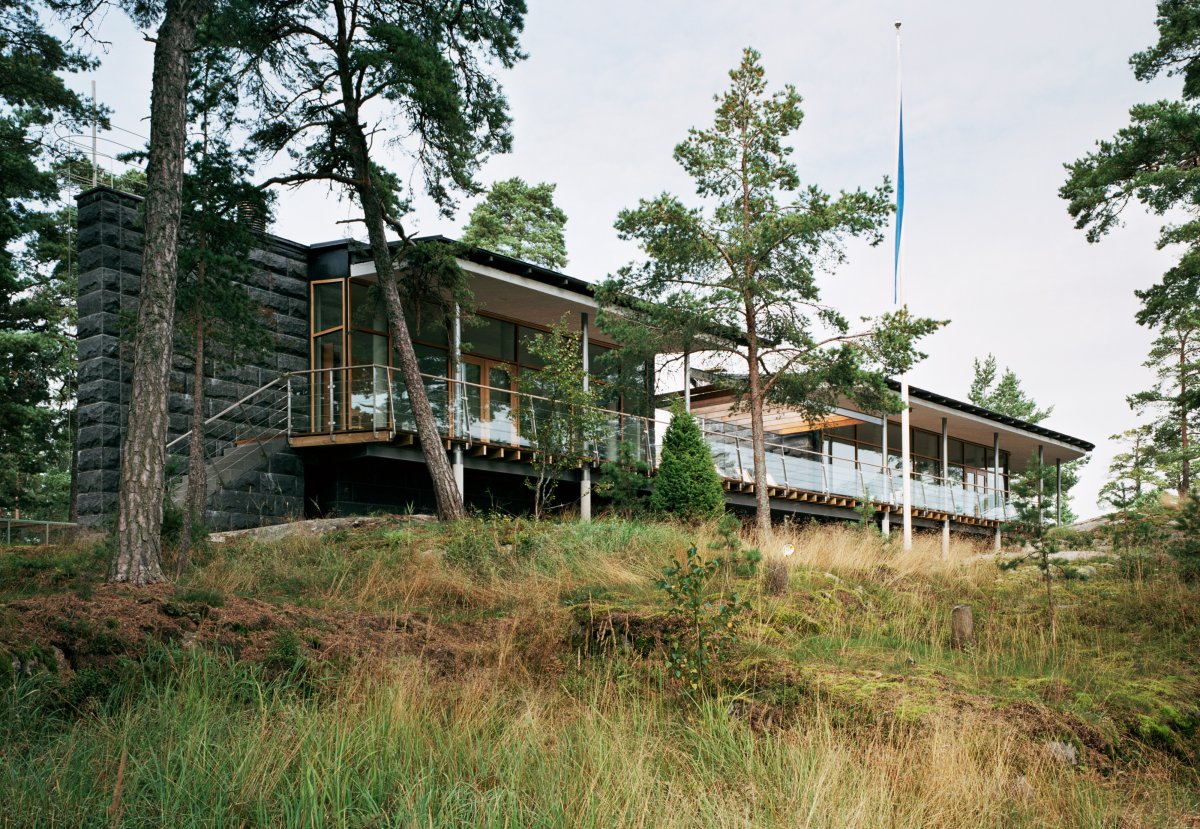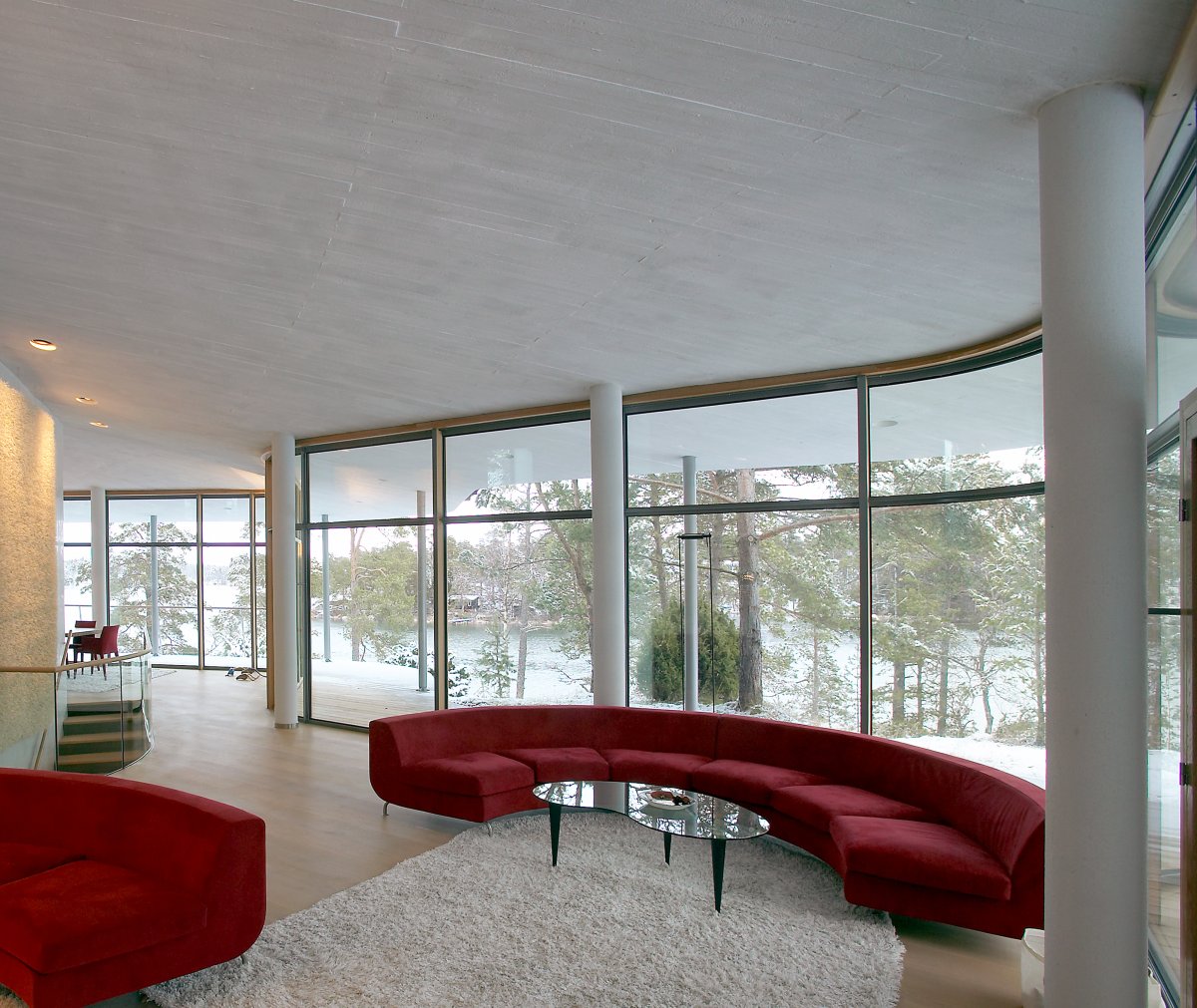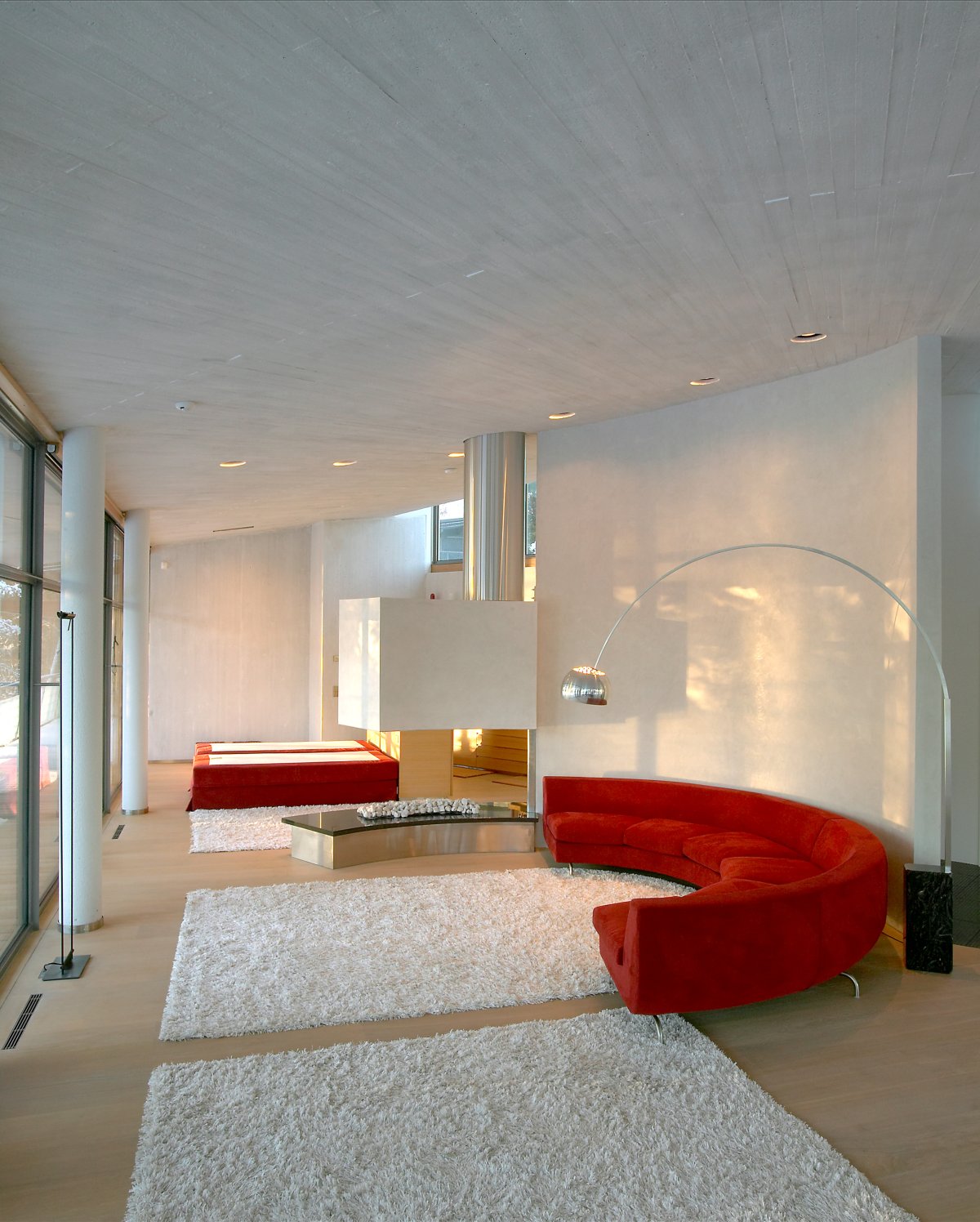The architecture highlights the presence of insular nature and the cycle of the northern light. Through a glass wall, the indoor space extends to a larch-covered terrace, which is carefully fitted in with the intact grooves, lichen, creeping juniper and old pines on the varied rock surface that dominates the site. The topography of the place as well as the curved form of the headland, the seascape and the bay defined the overall form and the basic layout of the building complex.
The interior spaces, openly connected with each other, are delimited by the back wall of dark granite and two curved partial walls that are load-bearing. The windows of the back wall look over the forest to the horizon. The blank areas of the window zone are clad with copper louvres. The fan-shaped roof is also copper. The stone wall is lightened by means of larch battening and pergolas, allowing climbing plants to lift up the living covering of soil. The guest room and sauna are detached structures, as is also the multi-use gate building.
The design and choice of materials were done in close dialogue with the clients. The interior is dominated by pale fair-faced concrete, the fine texture of timber formwork receiving the movements of light. The curved partial walls are coated with white-grey polished waxed stucco on the concave side. The floor is of thick oak plank.
The intact nature was carefully protected during construction. A red-brick house built in the 1950s, totally mildewed, was demolished from the site. In its place in front of the entrance to the new building, there was an area that had to be treated. It was planted with species typical of the place: sedum, wild strawberry, juniper and wild rose.
The buildings have a hot water circulation heating system that is connected to a ground-source heat pump.






